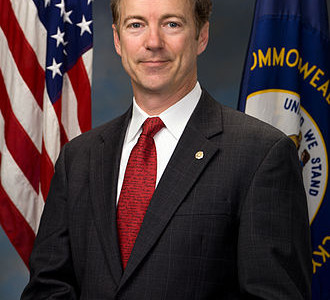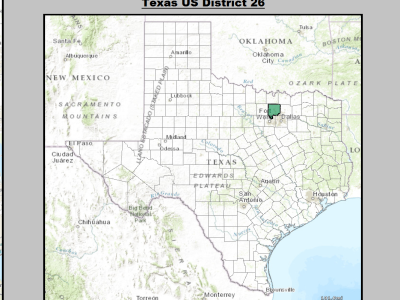General
Guest Blogger John Nagle: The Clean Air Act Applies to Greenhouse Gases Because of What Congress Said, Not Because of What Congress Intended
A Reply to Megan Herzog
In my recent CNN op-ed and in her previous post, Megan Herzog and I agree that the Supreme Court has properly interpreted the Clean Air Act (CAA) to apply to the emission of greenhouse gases. We just disagree about the correct manner in which to reach that conclusion. Judges and scholars generally favor an originalist …
CONTINUE READINGIs California Finally Ready to Get Serious About Groundwater Reform?
Prospects Good for Passage of Landmark Groundwater Legislation
California, which prides itself as being a national and international leader in so many areas of environmental policy, lags woefully behind other jurisdictions when it comes to at least one subject area: groundwater regulation. Alone among the Western states in the U.S., California lacks any statewide system of groundwater regulation and planning. (Until a few …
Continue reading “Is California Finally Ready to Get Serious About Groundwater Reform?”
CONTINUE READINGRand Paul and the Environment (Take 2)
Guess what: he’s no friend of the environment.
Yesterday I posted a confused discussion of Paul’s environmental views. (Probably due to brain lock from spending too many hours puzzling over the numerical examples in EME Homer!) I wanted to replace it with a clearer description of his views, so I pulled it from the website. Let’s try this again. This first thing to know about Senator Paul is …
Continue reading “Rand Paul and the Environment (Take 2)”
CONTINUE READINGDoes Scalia’s Opinion in Utility Air Regulatory Group v. EPA Help Protect the ACA?
The UARG majority opinion says the context and overall structure of a statute help determine the meaning of statutory terms
The tax subsidies provided under the Affordable Care Act to pay for health insurance are, of course, the subject of significant press coverage since dueling federal appeals courts came to different conclusions about who receives them this week. The D.C. Circuit Court of Appeals held, in a 2-1 decision called Harbig v. Burwell, that an …
CONTINUE READINGNorth Dallas Forty
A North Dallas Representative sponsored the House bill to save inefficient light bulbs — but he also advocates energy efficiency.
Yet again, House Republicans have passed a ban on enforcing efficiency regulations for light bulbs, taking a brave stance in favor of energy wastage. The amendment bans DOE from spending any money to enforce the restrictions. They’ve done this repeatedly, for reasons that seem to have more to do with talk radio than with any actual …
Continue reading “North Dallas Forty”
CONTINUE READINGThe Role of Permits in the Regulatory State
The structure of permitting programs can make a big difference for the implementation of environmental law
Author’s Note: The following post is co-authored by Eric Biber and J.B. Ruhl, the David Daniels Allen Distinguished Chair of Law and the Co-Director of the Energy, Environment, and Land Use Program at Vanderbilt Law School. This post is cross-posted at Reg Blog. Reg Blog, supported by the U Penn Program on Regulation is an …
Continue reading “The Role of Permits in the Regulatory State”
CONTINUE READINGOil By Rail: Nine Things California Can Do to Increase Safety
While FRA Considers New Federal Regulations, States Can Ramp Up Prevention and Emergency Response
At a joint Senate and Assembly hearing last week on oil by rail safety in California, some lawmakers expressed frustration at slow federal action, and asked what California can do to increase public safety. My testimony focused on federal preemption issues, defining areas where the state can regulate, and those where it is preempted by …
Continue reading “Oil By Rail: Nine Things California Can Do to Increase Safety”
CONTINUE READINGStanding, Settlement, and Mass Torts
BP is trying to use standing law to wiggle out of its own settlement agreement. The courts have been right to say no.
BP entered into a settlement in a massive class action against it arising out of the BP oil spill. Now it’s trying to get out of part of the settlement while keeping the rest of the deal in place. BP’s argument involves three areas of confusion in standing doctrine: how does it apply to class actions, …
Continue reading “Standing, Settlement, and Mass Torts”
CONTINUE READINGBreaking News: U.S. Supreme Court Renders Split Decision in Major Climate Change Case
The U.S. Supreme Court today issued its long-awaited decision in Utility Air Regulatory Group v. Environmental Protection Agency, the justices’ third encounter with climate change law and policy. In a Solomonic ruling, the Court ruled that EPA lacks authority to require the operators of “stationary sources” of greenhouse gas emissions (power plants, factories, etc.) to obtain …
CONTINUE READINGCalifornia Court Upholds State Water Board’s Broad Authority to Ban Unreasonable Uses of Water
Ruling is Especially Timely, Given California’s Ongoing and Severe Drought Conditions
I recently wrote about a then-pending court case in which California grape growers were challenging the State Water Resources Control Board’s limits on the growers’ diversion of water from California rivers and streams to provide frost protection for their grapes. That litigation is important because it goes to the heart of the Board’s authority under …
CONTINUE READING







